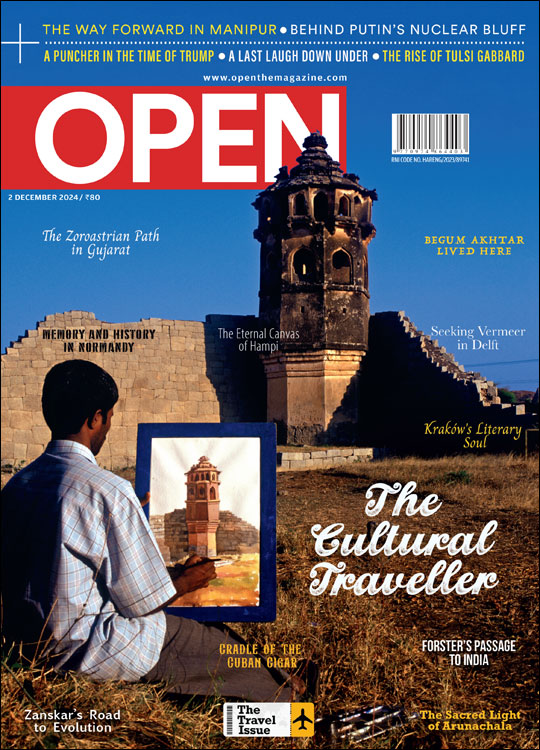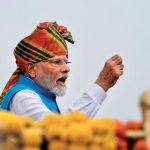Begum of the Basilica
Julia Keay tells the story of an extraordinary woman ruler who constantly reinvented herself to survive the turmoil of India’s passage to British rule
 Mark Tully
Mark Tully  Mark Tully | 16 Jul, 2014
Mark Tully | 16 Jul, 2014
/wp-content/uploads/2015/11/Book-Farzana.jpg)
Julia Keay tells the story of an extraordinary woman ruler who constantly reinvented herself to survive the turmoil of India’s passage to British rule
Julia Keay tells the story of the most remarkable woman to straddle the chaotic second half of the eighteenth century; the years between the collapse of effective Mughal rule and the establishment of British control over the Subcontinent. It was a time when Marathas, Afghans, Rohillas, Jats and Rajputs battled for control of the Emperor, a time when loyalty counted for nothing, a cruel and violent time. In those years, Keay says, ‘Gratuitous brutality was commonplace. Beheadings, garrottings, hangings, mutilations, dismemberings, disembowellings—nothing was taboo.’ The heroine of this story, Begum Samru, survived being lashed to a gun carriage and left in the scorching summer heat for almost a week by her own step-son, who had led her troops in a mutiny.
The title of this book, Farzana, is the name that the Begum was known by at the Mughal court and the one she is largely remembered by. Keay says that her survival in those dangerous times and her remarkable achievements were due to her ability to reinvent herself. She started life in the unpromising position of what we would now call a ‘sex slave’. When she died in her eighties, she was undisputed ruler of the prosperous jagir of Sardhana near Meerut, commander of an army, friend of the British, holder of titles that declared her to be ‘the most beloved daughter of the Mughal Emperor’ and perhaps even more remarkably, considering she was born a Muslim, ‘the beloved daughter in Christ’ of the Pope. Farzana grew so close to Emperor Shah Alam that at one stage, according to Keay, his relationship with her became ‘crucial not just to the two principals but to the very existence of what remained of the Mughal Empire’. But when the British finally entered Delhi, she made herself acceptable in their society.
Farzana was a formidable military commander, capable of holding together an army of men, most of whom, according to one foreign military officer of those times quoted by Keay, were “drunken scroundrels capable of the most vile excesses”. She was also a formidable administrator. Under her rule, agricultural production rose in the jagir of Sardhana and its population expanded. The Begum was a woman who attracted, as lovers, three of the ruthless foreign mercenaries who played important roles in the armies that fought the ceaseless wars of those times. But for all her reputation as a lover and temptress, Keay suggests that the Begum’s conversion to Catholicism was at least in part inspired by piety: ‘[T]he possibility that she had undergone a genuine spiritual conversion cannot entirely be discarded.’ Keay goes on to point out that Farzana remained a practising Catholic for the rest of her life and employed a personal chaplain. While many of the palaces and forts built by other rulers of those times now lie in ruins, the magnificent church the Begum built was declared a Basilica by the Pope in 1961 and Catholic pilgrims still visit in large numbers.
This book is much more than a biography. In tracing the twists and turns in her heroine’s fortune, the author guides readers through the complexities of the alliances which were made and broken, the battles which were fought, making it clear that although Shah Alam II was ‘an enfeebled emperor’, being able to rule in his name still mattered greatly and the imperial titles he could bestow were still eagerly sought. Her graphic descriptions of the devastation, bloodshed, lawlessness and chaos of those times and the contrast after the British finally entered Delhi, show that, like it or not, there were benefits from the spread of their rule.
A story like this is difficult to tell. With so many changes, such fluctuating fortunes, it could easily become a jumble of names and dates. But Keay provides a coherent narrative built around the life of Farzana. With her gift for description and the portrayal of character, she makes her history of this period of transition what I can only call a good read. There is a sadness about the book, however, because after completing the first draft, Keay died of an illness she had suffered for more than a year. In the ‘Afterword’, her husband, fellow-historian John Keay, says, ‘Julia desperately wanted to retrieve Farzana’s reputation from the romancers and popularisers.’ She certainly succeeded in that. As William Dalrymple says in his introduction to Farzana, ‘Julia will be greatly missed and this book shows what an enjoyable writer we have lost.’
(Mark Tully is a veteran broadcaster and author)

/wp-content/uploads/2024/11/Cover-Travel.jpg)







/wp-content/uploads/2024/11/Syeda-Saiyidain-Hameed1.jpg)
/wp-content/uploads/2024/11/Memories1.jpg)
/wp-content/uploads/2024/11/SaltandSand1.jpg)

More Columns
Maha Tsunami boosts BJP, JMM wins a keen contest in Jharkhand Rajeev Deshpande
Old Is Not Always Gold Kaveree Bamzai
For a Last Laugh Down Under Aditya Iyer